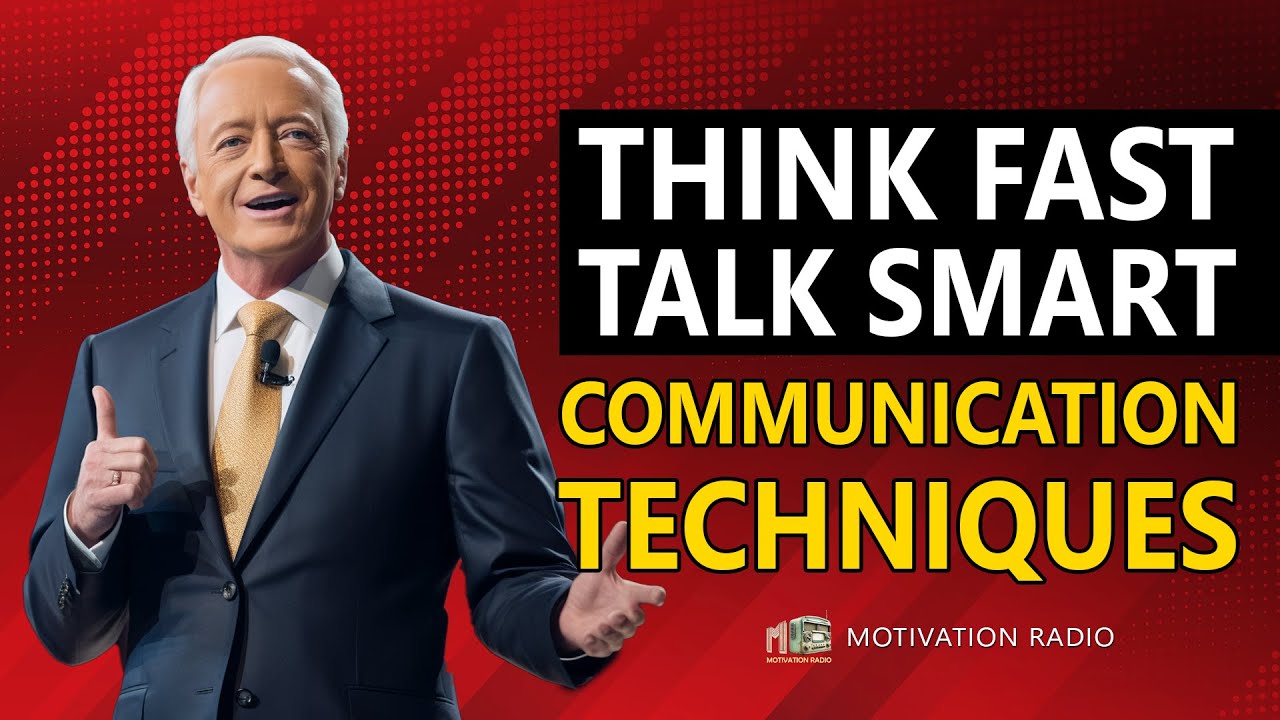Effective Voice Modulation
Summary
TLDRThis script emphasizes the importance of voice modulation in effective communication, suggesting that a powerful voice can significantly enhance the message being conveyed. It advises on proper enunciation, the significance of emphasis, and the need to project one's voice to different audience distances. The concept of pitch is introduced as the horizontal throw of the voice, distinct from volume, which is vertical control. For beginners, the script recommends practicing vertical and horizontal voice projection and using body guidance to control pitch. Additionally, it highlights the value of vocal variety, including the strategic use of pauses, and concludes that mastering these skills requires discipline and practice, echoing Bruce Lee's philosophy of mastering one technique through repetition.
Takeaways
- 🎙️ Effective voice modulation is crucial for adding value to the message being conveyed.
- 🗣️ Articulation is an art that transforms communication into a powerful tool.
- 💬 Enunciation is key; avoid discontinuously speaking and ensure words are fully pronounced.
- 📣 Emphasize the right syllables to add power to your speech.
- 👥 Be aware of your audience's proximity and project your voice accordingly.
- 🔊 Volume control is the vertical aspect of voice projection, distinct from pitch.
- 🎶 Pitching is the horizontal throw of your voice, essential for engaging various audience distances.
- 🧗♂️ Use body guidance to project, raise, and lower your voice effectively.
- 🛑 Pausing is a vital aspect of vocal variety; practice the right balance to maintain audience engagement.
- 🏋️♂️ Consistent practice is necessary to master voice modulation and articulation.
Q & A
What is the importance of a powerful and effective voice in communication?
-A powerful and effective voice adds value to the message being conveyed, ensuring that the communication is not just heard but also understood and impactful.
Why is voice modulation considered an art?
-Voice modulation is considered an art because it involves the skillful control of pitch, tone, and volume to articulate messages effectively, which requires practice and mastery.
What is the first recommendation for improving voice clarity and impact?
-The first recommendation is to enunciate properly, ensuring that words are fully pronounced and not rushed, which helps in conveying the message clearly.
What is the significance of emphasis in voice modulation?
-Emphasis is significant because it directs the listener's attention to the most important parts of the message, enhancing the effectiveness of communication.
How does one project their voice to reach different audience levels?
-To project the voice, one needs to practice both vertical and horizontal projections, which involve raising or lowering the pitch and volume to engage various audience levels.
What is the difference between pitch and volume in voice projection?
-Pitch refers to the horizontal throw of the voice, affecting how high or low the voice sounds, while volume is the vertical control, determining the loudness of the voice.
Why is it important to use body guidance when projecting the voice?
-Using body guidance helps in controlling the pitch and volume effectively, allowing the voice to be projected with the right tone and quality, ensuring it reaches and engages the audience.
How can one practice voice projection for beginners?
-For beginners, practicing vertical and horizontal projections by imagining a stairway and adjusting the voice pitch step by step can help in learning to project the voice effectively.
What is the role of pausing in vocal variety and articulation?
-Pausing is crucial in vocal variety as it allows the speaker to control the pace and impact of the message, preventing the audience from becoming disengaged or confused.
Why is practice essential for mastering voice modulation and articulation?
-Practice is essential because it helps in developing discipline and consistency in voice control, leading to improved articulation and a more powerful and effective communication style.
What advice does the speaker give regarding the practice of voice modulation?
-The speaker advises practicing one technique repeatedly, likening it to Bruce Lee's philosophy of mastering one technique through 20,000 repetitions rather than knowing 20,000 techniques superficially.
Outlines

This section is available to paid users only. Please upgrade to access this part.
Upgrade NowMindmap

This section is available to paid users only. Please upgrade to access this part.
Upgrade NowKeywords

This section is available to paid users only. Please upgrade to access this part.
Upgrade NowHighlights

This section is available to paid users only. Please upgrade to access this part.
Upgrade NowTranscripts

This section is available to paid users only. Please upgrade to access this part.
Upgrade NowBrowse More Related Video

5 #tips infalibles para mejorar tu comunicación no verbal

The 110 techniques of communication and public speaking | David JP Phillips | TEDxZagreb

Brian Tracy Best Advice on Mastering The Art Of Effective COMMUNICATION | How Successful People Talk

How to Get a DEEP Voice (Permanently)

Paralinguistic features

How To Spark Emotion Within Women
5.0 / 5 (0 votes)